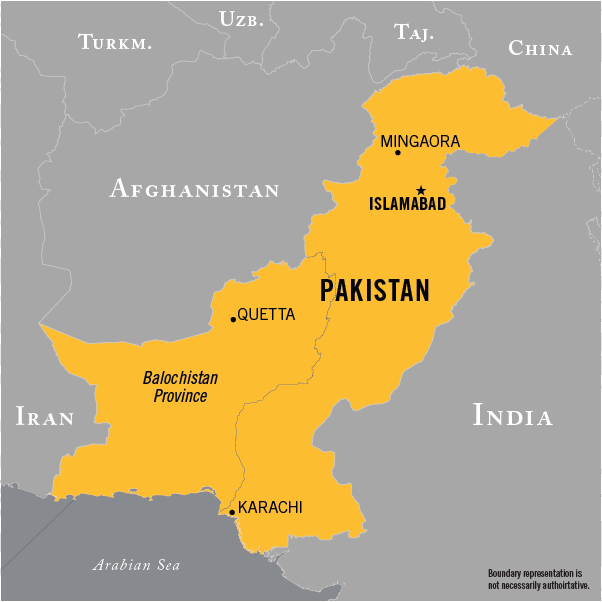TERRORIST GROUPS

BACKGROUND
Lashkar-e-Jhangvi (LJ) was founded in 1996 as a militant offshoot of Sipah-i-Sahaba Pakistan, a Deobandi and anti-Shia group that emerged in the mid-1980s in reaction to class-based conflict and the domestic Pakistani Shia revival that followed the Iranian revolution. LJ seeks to transform Pakistan into a Deobandi-dominated Sunni state, and primarily targets Shia and other religious minorities.
Akram Lahori is the leader of LJ but in 2002 was arrested, later convicted of sectarian killings, and is currently incarcerated. Lahori officially remains LJ’s amir and Malik Mohammad Ishaq, one of LJ’s founding members, is believed to have taken command since his release from prison in 2011. According to Pakistani media reporting, LJ consists of at least eight loosely coordinated cells spread across Pakistan with independent chiefs for each cell. At least seven of these cells—Lashkar-e-Jhangvi Al Alami, Asif Chotoo group, Akram Lahori group, Naeem Bukhari group, Qari Zafar group, Qari Shakeel group, and Farooq Bengali group—are active in Pakistan’s largest city, Karachi. Many are linked to al-Qa‘ida and Tehrik-e Taliban Pakistan (TTP) but still recognize Ishaq as the head of LJ. In particular, LJ cells also often coordinate with TTP factions in Karachi when targeting law enforcement agencies and Shia.
LJ collaborates and has overlapping membership with other Pakistan-based radical Sunni groups including al-Qa’ida and TTP. Pakistani authorities suspected LJ collaborated with these groups in the 2009 attack on the Pakistan Army General Headquarters in Islamabad and in several attacks in 2010 targeting Pakistan’s Criminal Investigation Department. LJ members reportedly also have been linked to a number of high-profile kidnappings and killings of Westerners in the region, such as the 1997 killing of four US oil workers in Karachi, the 2002 kidnapping and execution of US journalist Daniel Pearl, the August 2010 kidnapping of the son-in-law of the former Chairman of the Joint Chiefs of Staff Committee, and the August 2011 kidnapping of a US citizen that was later publicly claimed by al-Qa‘ida.
In 2013, LJ claimed credit for some of the most deadly sectarian attacks in Pakistan’s history. In January, a billiard hall in Quetta, Balochistan Province, was hit by two blasts, first by a suicide bomber and about 10 minutes later by a car bomb, killing 92 people and injuring more than 120, mostly Shia. In February, explosives hidden in a water tanker exploded in a crowded market in Hazara town, a Shia-dominated area on the edge of Quetta. The blast killed 81 people and wounded 178, stoking anger and frustration among Shia at the authorities’ inability or unwillingness to crack down on LJ. The group, with al-Qa‘ida, also claimed responsibility for a June suicide attack in Quetta against a bus carrying Pakistani female university students. A female suicide bomber was one of the attackers, and at least 25 people were killed, which included a follow-on assault on a nearby hospital.
The US State Department designated LJ as a Foreign Terrorist Organization in January 2003.
INFORMATION UPDATED SEPTEMBER, 2013.



